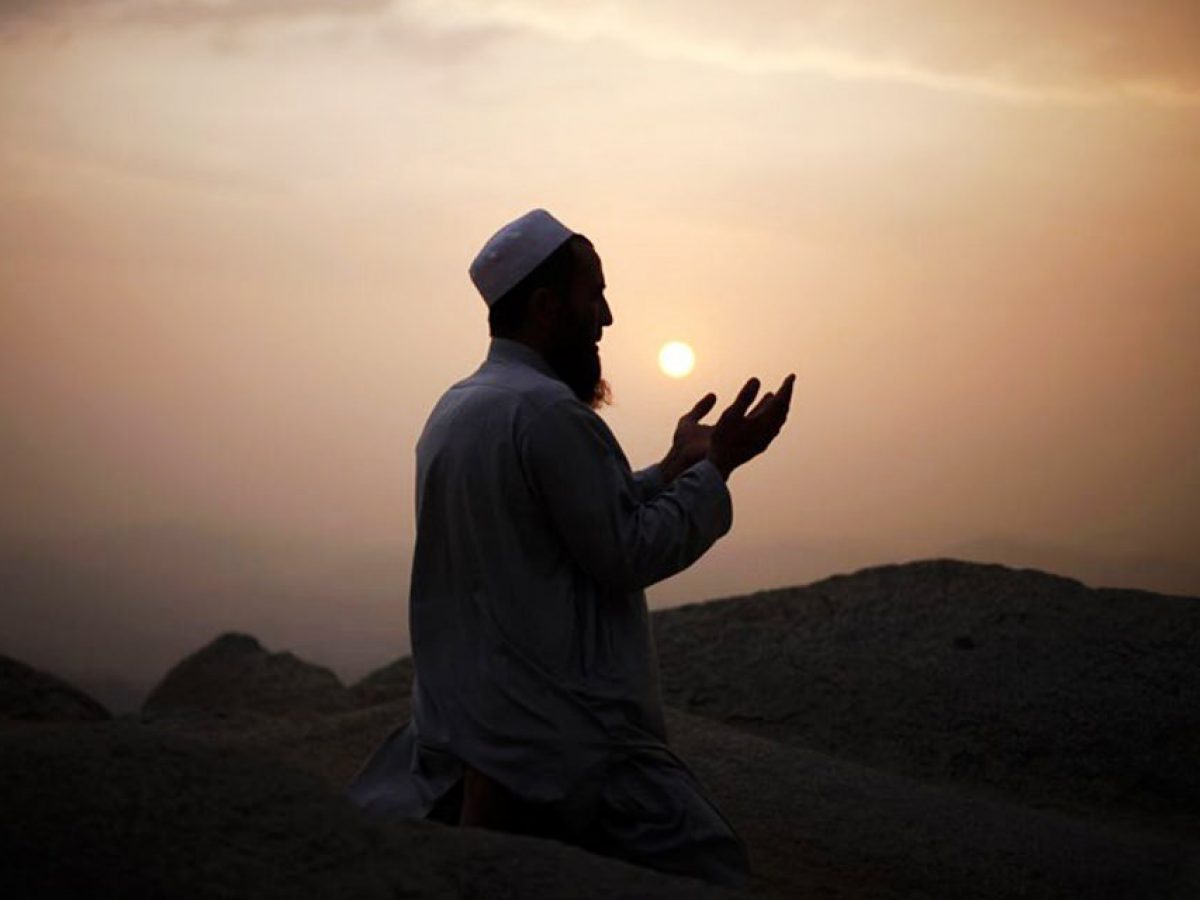
Prayers
- Past paper questions
Prayers
Q1a ) How do Muslims perform a single Rakat of a prayer ?
Ans ) Prayer is the second pillar of Islam and this gift was given to the Muslim by Allah Almightly an event of Miraj . Prayer is the first act that the person will be held accountable for and it is the last thing that Prophet PBUH said to his nation before he died
“ Prayer, Prayer and what your right hand possesses .”
Intention : pure, Quran condemns the prayer if not pure lord is watching him , purely for Allah.
Timings : All prayers on time e.g
Fajr : After break of dawn , just before sun rises.
Zuhr : When sun begins to decline ends when shadow of man becomes dark .
Asr : When shadow of man becomes double his length , just before sun
Maghrib : Just after sunset , disappearance of the twilight in the horizon
Isha :Disappearance of the twilight in horizon till midnight
Qaza : If prayer not offered on time .
“ Prayers indeed have been enjoined , on believers at fixed times “
Namaz Farz incomplete if skipped / invalid
Sunne Mauqada shoul not be skipped
Sunne Ghair Mauqada can be skipped
Nafal : Optional
Fajr 2 Sunnat Mauqada , 2 Farz
Zuhar 4 Sunnat Ghair Mauqada, , 4 Farz
Asr , 4 Farz , 4 Sunnat Ghair Mauqada
Isha : 4 sunnat , 4 Fard, 2 sunnat Witr ( wajib ) Namaz done if skipped but qaza has to be offered
Purity : major fith minor dirt, purification bath , should be in ablution state he stated ,
“Allah does not accept any prayer , that was not performed , while in a state of purity “.
Satar , Qiblah , Niyat
Satar : Male navel to knee
Female : face , hands , feet exception
Qiblah:
In the 2nd year of Hijrat , Allah decided to change the Qiblah from bani Israel Bani Ismael , Masjid -e - Aqsa Kabah .
“During the namaz , direct your face to the Masjid -e Haram . Whereever you maybe , turn your faces to it . “
Niyat:
A person should stand erect , with his face towards qiblah with both hands straight on his sides, after which he makes the intention ( time, prayer, rakat, qiblah, Allah ) Then the person raises both his hands as far as ears, the female may raise it up to shoulders and says Allah o Akbar . Allah is the greatest .This is Tkbeer e tehren . Then he brings both his hands down and folds them below the naval with right hand above/ over the lefty hand . Females fold their hands on their chest and then begin the recitation . This position is called Qiyaam or standing position.
Sana , Taawuz , Tasmia, Surah e -Fatiha and Quranic recitation Ruku Sajda.
SANA : Standing position praising Allah .The worshiper first of all recites the sana of Allah and appreciates Allah’s glory.
Then he recites Taawuz , in which the person seeks refuge with Allah against evil . He says “ I seek refuge with Allah from the occused Satan . “
After that he recites Tasmia , which is “In the name of Allah , most gracious, most merciful. “
Then the worshiper recites extremely integral part of prayer . Surah Fateh without which no prayer can be complete . He said about it , “ There is no prayer without Surah e Fateha. “
After the last word of Surah e Fateha , he says Ameen . Immediately after that he recites atleast minimum 3 verses of Holy Quran which is called Qirat. Then he says Allah is greatest and he bows for the Ruku , in which he bows down holding his knees and says the following supplications atleast 3 times, which is
“Glory to my lord, the great “
Then he raises his head and recites Tasmia which is “ Allah listens to him who gives praise and Tahmeed which is “ Oh Lord ! All praise , is due to you alone “ After this he he again says Allah ho Abar and performs the act of prostraction, which is the most favourite act of Allah , during the prayer. In prostration he places both his hands , then nose and then forehead. The face should be between both the palms . The men should not place their elbows on the ground, while females are allowed to do so, and they should perform the Sajdah such a way , that they should not raise their rear part of the portion of the body and they recite Tasbih e Sajda ( supplication of sajda ) which is , “ Glory to my lord , the most high .”
After the first sajda , man sits on his left foot which is folded and keeps the right foot erect on the ground, both hands should be on histhighs close to the knees this position called Jalsa. Then he again says “ Allah is the greatest “ and performs the second sajda in the similar manner to the first.
The second Rakat is performed in the same manner , except that Sana and Tawuz are not repeated. If it is second Rakat . Then after the second sajda worshiper will sit for Qaadah and will recite Tahiyya after which he would recite Tshaud. While reciting this he would raise the index finger of his right hand, when the word “laillah” ( no god except Allah ) would come, and he should lower while uttering these words . If it is the last Rakat, Then it will be considered Qaidah Akhira and after this he will recite Durud and certain supplications or Dua. Then he will turn his face to the right and left while saying “ Peace be upon you and the mercy of Allah “ which is called Tasleem , which would mark the end of the prayer. In case of Witr of Isha,in the third Rakat after recitation of Qirat , he would raise his hands to the ear and will say Tkbeer and then will folded hands he would recite Dua e - Qunoot . If any of the obligatory component for example Takbeer e Tehrima , Sajda, Ruku is missed than he shall have to repeat the prayer, but if any of the wajib is missed for example the worshipper did not sit for the Qaadah ullah , then its remedy would be that he will perform prostration of forgetfulness which is called Sajda - Sehew.
Friday Prayers
2003 Oct / Nov
- Describe the main features of the Friday congregational prayers.
- Explain the main differences between regular daily prayer and personal prayer .
Features , Characteristics , Conditions
Friday is a day of special importance for the Muslims. It is declared to be Syed - al -Ayyam which means the best day of the week. Great reward has been promised for offering the Friday prayers. There is an hour in Friday, in which supplications are accepted. The following verses mention the importance of congregational prayer on Friday :
“Oh you who believe!when the call is proclaimed to prayer on Friday, hasten earnestly, to the remembrance of Allah, and leave all of buisness that is the best for you if ye but knew ! And when the prayer is finished, then may ye disperse through the land and seek of the bounty of Allah . “
Friday prayer is an obligation upon every free adult, sane and resident mslim. If the one who misses it, without a valid reason’s a sinner . Those exempted from attending this prayer are minors, slaves, sick, travellers and women. These people are to offer Zuhr prayer in their homes. Friday prayer substitutes Zuhr prayer and may not be offered as Qaza instead he has to offer Zuhr prayer. The time of Juma is the same as that of Zuhr. It cannot be offered without congregation , and will be valid , if there are two or more people present and form a congregation , Muhammad said , “ Two or more constitute a congregation.”
It is a highly desirable, that the worshippers should cut their nails, clean their teeth, take a purification bath and put on their best clothes on Friday. Muslims are rerquired to leave off buisness of every kind and hurry to the mosque . They may resume their business after the Juma prayer, because of the significance of Juma prayer. Hazrat Usman through Ijma ( consesus) made it a law that there will be two Azaans for Friday prayer, so that if anyone misses the first Azaan , he could make it up for, by listening the second Azaan.
On reaching the mosque, one should first offer the Tahayyat ul Masjid prayers and then the 4 pre farz Sunnahs. Then the second Azaan is called before the Khutba after which Imaam stands up and facing the audience, delivers the khutba listening to it Wajib. By the Khutba is being delivered, no conversation is allowed, even praying , reading the Quran or reciting Durud is forbidden. Everyone should be seated and listen to the Khutba quietly till the end. The khutba consists of two parts . In the first part some Quranic passages are recited and explained. After this the Imaam sits down for a short rest, and then stand up to deliver the second part of the sermon in this part especially , the Imaam prays for the general welfare of the muslims.
After the khutba , Iqamat is called and people arrange themselves in rows. Two obligatory rakat are offered under the leadership of Imaam who recites the Sana , Tawuz and Tasmiya in the 1st Rakat in a low voice. Then the Imaam recites Surah - Fatiha and Qirat in a loud voice in both the rakaths and Muqtadis should listen to Imaam ‘s recitation and say Ameen in a low voice ( after surah e fatiha ) and with this Friday prayer is complete . The Muqtadis may now offer individually. 4 Sunnahs, followed by 2 more Sunnahs and 2 Nawafil.
Q a ) What are the conditions of prayer that must be fulfilled before performing them ./10
B ) Explain the importance of mosques in Muslim community./4
2010 May /June
Conditions , pre requisites , preparations of prayer.
Niyat ( Intention ) pure
“ Woe to the worshippers who do good to be seen by others. “
For example when Holy Prophet was living in Madinah . Hypocrites were there. These people offered all religious obligations but only for sake of show off. They will be thrown in deepest level of hell. Sincere intention Allah is watching is real Niyat what we are doing for whom, graceful way showing our concentration (deep) proper posture and suitable speed. To show the respect and love for Allah not the throwing away of our burdens.
Timings : Mention 2 -3 prayer Times . If we want proper reward of prayer, we should offer it on time, or else it will not be considered regular it will be Qaza. “Indeed prayers have been enjoined on Believers at fixed times”
Purification: Cause of major filth and their remedies . Purification bath removes major filth and its faraiz are to be mentioned. Causes of minor filth and their remedies ablution and Wuzu , complete method not to be mentioned, Quran says :
“ Oh who you believe ! when you prepare for prayer , wash your faces and your hands to the elbows, rub your heads and wash your feet to the ankles. “
In case of a disease which aggravates because of water or water is not available, purity is gained through Tayammum . Major filth can also be cleaned through Tayammum . As soon as the disease is finished, this Tayammum of water becomes invalid, as soon as it ends. ( dry ablution) substitute of wuzu and purification.
Purification of place:
The clothes and the place where prayer isperformed should be clean from any impurity.
Satar: This means the compulsory covering of body as required for worship. Man should be covered atleast from navel to the knee whereas for females the satar is to be fully covered except for the faces, hands and feet. Namaz is invalid if Satar not there.
Direction of Qiblah :
Earlier Bani Israeli faced Msjid e - Aqsa 2 A. H during payer. Holy Prophet was commanded by Allah to turn to Qiblah , prayers should be performed facing the Qibla ( direction of the Kaaba) Travellers who don’t know Qiblah direction can turn anywhere.
Eid Prayers :
Method , characteristics , features .
What are the main features of Eid prayers ?
The two main festivals of Islam are Eid -ul - Fitr and Eid - ul - Azha. Eid means happiness or festivity . Eid ul Fitr is celebrated on 1st shawal which follows the end of Ramazan. Eid ul Azha falls on the 10th of Zilhij and follows the completion of Hajj. Eid is a day when Muslims assemble in a brotherly and joyful atmosphere to pay fulfil their spiritual obligation.
The Eid day starts with congregational prayer in morning . During the prayers the glorify Allah ‘s name and ask for his forgiveness. The method of prayer for both Eid’s is similar / same. The Eid prayers are Wajibon all those people on whom the Friday prayer is an obligation . For example free adult muslim, male and resident . These are congregational prayer and cannot be said indivdually . Eid prayers are not a substitute for the obligatory. Fajr prayer and there is no Qaza for Eid prayer . The time of Eid prayer is any time after sunrise but before noon. Eid - ul Azha prayers are held a little earlier than the Eid ul Fitr prayers. No Azaan or Iqamat is required. It consist of 2 Rakaats with the Imaam , reciting in each Surah - e -Fatiha The intention for praer is in these words “ I intend to offer 2 Rakat wajib of Eid ul Fitr / Eid ul A zha with 6 additional Takbirs, behind this Imaam facing Holy Kaabah”.
Imaam recites Takbir e e Tehreem in a loud voice and Muqtadis also sayy the Takbir in a low voice and fold their hands below their navel as in other prayers, Both the Imaam and Muqtadis now recite the Sana in a low voice the Imaam raises both hands up to the ear and says Takbir in a loud voice which is followed by Muqtadis in a low voice. They should 2 more Takbirs in the same manner and after the third Takbir the hands are to be folded in the usual manner.The imaam shall now recite Taasmia, Surah e Fatiha and Qirat and the Muqtadis should only listen attentively but should not recite anything. They should only say Ameen in a low voice after Surah e Fatiha. Then they would end up the 1st Rakat in the prescribe usual manner.
In the second Rakat Imaam recites Tasmia, Surah e Fatiha and Qirat which should be listened by Muqtadis attentively without any recitation and just say Ameen after Surah e Fatiha in a low voice. After Qirat the Imaam raises his hands and recites the Takbir in a loud voice .They would say 2 more Takbirs in the same manner that both should say “Allah is the Greatest” without raising their hands and bow down for ruku. Now the second rakat should be completed in a usual manner.After this the Imaam delivers the Khutba in 2 parts, with a short break in between. The khutba is Sunnah and should be heard attentively in the sermon of Eid ul Fitr the Imaam must draw the attention of audiance to Sadqatul -Fitr which is an obligatory charity on every Muslim who pays Zakat. It should be distributed amongst the poor before the Eidprayers so that so the poor may also be able to celebrate the Eid Day .
In the sermon of Eid ul Azha the Imaam should draw attention to the duty of sacrifice , in commemoration Ibrahim’s sacrificing his own son for the sake of Allah. This duty is to be observed by every muslim with means. It is preferable to slaughter the animal of sacrifice on Eid day after Eid prayers. The sacrifice of an animal on 2nd and 3rd of Eid is also acceptable.
Congregational Prayers :
Features , purposes
A ) Describe the main characteristics of congregational prayer.
The Quranic injunction is to be establish prayers in a particular place called Masjid . Prayers should be said in congregational under the leadership of the Imaam , as this was the practice of Muhammad PBUH and his successors. Quran says:
“ And bow down your heads with those bow down ( in worship)
Congregational prayer has great reward. Muhammad said PBUH.
“Prayer is congregation is better than the prayer of a man by himself by 27 times.”
Only Farz are to be said in congregation, the other Sunnahs are said singly .One person with the Imaam would constitute a congregation , even if the other person was a child or women . as Muhammad said,
“Two or more constitute a congregation” such prayer is only obligatory on Muslim men or whom the prayer is obligation. The men excused for the congregation only in case of rain, extreme weather or illness. The women are allowed to join the congregation but their prayer in their houses is better.
If the congregation of two persons than the follower will be on the right side, and if the third person joins the prayer than the Imaam will move forward or the Muqtadis move backwards , In case of women form a congregation, then the female who leads the prayer will not stand in the font but stand in the middle . If females join the congregation then they will form a back row and they must leave the congregation before the men leave.
The best men fit for Imaamat , is one who is well acquainted with Quran and Hadith. Before the congregation starts, the rows are straightened and the gaps are filled. The Muqtadis should stand shoulder to shoulder, in a new row then behind them there will be a row of children and then the women. Iqamat should be called in a low voice .The intention is made , all will say the Takbeer - e - Tehrima. Now the Imaam reads, loudly and the followers will listen to him, but they will say Ameen in a lower voice when the Imaam recites Surah e Fatiha. Incase /if Imaam recites Surah e Fatiha within himself, then the followers may read it in silence . When Imaam bows, they will bow and when the Imaam says Tasmia (Allah listens to him who praise ) the Muqtadis will say Tehmeed ( Oh lord all praise is due to you alone ) They will follow the Imaam in all the actions and will not go ahead of the Imaam in standing, bowing or prostrating.
If anyone joins the congregation has begun and advanced, then he must follow the Imaam in the stage, in which the Imaam is at that time, and will complete his prayers after the Imaam has closedwith Tasleem .” He who gets the last Rakat , gets the whole prayer” . In case of Friday and Eid prayer , Khutba is also delivered by the Imaam , in which he glorifies Allah Almighty and explains Quranic passages and also discussions the issues and remedies of the common people.
Oct/ Nov 2012
- What is the purpose of prayer in congregation?
- Explain why Muslims believe that personal prayer is important
Prayers should be said in congregation under the leadership of Imaam. This was the practice of Muhammad PBUH and his immediate successors who always lead the congregational prayers has great reward as Muhammad said ,
“Prayer in congregation is ………………………. by 27 times “
Congregation prayer serves as a strong force in writing the believers with each other. The gathering of all people living in a locality, 5 times daily in the mosque helps in the establishment of healthy, social relations, between different sections of the Muslim community. This gathering becomes larger in the weekly Friday prayers and still larger in the two Eid gatherings. This reaches its climax on the occasion of the Hajj when Muslims from all parts of world assemble together in Makkah , so these congregations convey the message to everyone that irrespective of all the boundries of colour, caste and creed and country, Muslims are united. And this strengthens the concept of universal one Ummah of the Muslims.
Congregational prayers levels social differences and promotes an atmosphere of equality and brother hood. In the mosque , a king may stand shoulder to shoulder with his poorest subjects, the white man with the black, the rich with the poor and the master with the slave. Congregational prayers lead to the realization of among the worshippers , that all men are absolutely equal in the eyes of Alla and the lord does not discriminates between human beings on the basis of their power wealth or position but the most righteous in the sight of Allah is the one who is more pious. So , these prayers removes all the fake standards for respect in this world., and teaches Muslims to respect and love all the Muslims equally, without any discrimination.
Congregation prayers also help Muslim living in one society to understand issues and the problems of each other, at local and country level. In khutba Imaam discusses the issues and they also talk about the remedies of those problems. In congregational prayers Muslim have to be very punctual and careful about the timings of the prayer which makes them disciplined and organized in their practical lives. Even the formation of rows teaches them to be organized. These prayers are also a great source of to raise the righteous deeds of a person as these are of very high reward, as compared to the normal at home,which would be of great help to a person when his deeds will be waked by Allah of Almighty on the day of judgement.
During the Khutba in congregational prayer, Muslims get a lot of knowledge and information related to Islam.These lessons of equality , brotherhood, learning and punctuality when put into practise, serve as a foundation for the unification of human race. These acions of the people help to create such an atmosphere in the muslim society in which everyone is living a peaceful life and getting the opportunities to progress in life and only through this we would be able to create a balanced peaceful and just Muslim society which is the main purpose of Islam
2013 May / June
- Describe how and why Muslims celebrate Eid ul fitr and Eid ul Azha?
- How do the two Eids bring Muslim community together?
A ) According to certain traditions, festivals of Eids were initiated in Madinah after the migration of Muhammad from Makkah. Hazrat Anas reported that “ Before Islam people of Makkah , Madinah celebrate certain days as occasions of fun and recreation “
All this the Prophet PBUH remarked that “The Almighty has fixed two days of festivity instead of these for you , which are better than these Eid ul fitr and Eid ul Azha . “
Both the festivals are occasions for showing gratitude to Allah and remembering him and are of entertainment.
Aisha narrates that on Eid day, her father Abu Bakr (R A) stopped young girls from singing, Muhammad PBUH said, “Abu Bakr let them sing every nation has an Eid and this day is our Eid “
Eid ul fitr is also called feast of breaking the fast . It is celebrated on completion of the Holy month of Ramazan and that is on the first of Shawwal , after of the moon on the 29th and 30th of Ramazan . It is a gift for those from Allah Almighty , who were regular in fasting during Ramazan.
It is forbidden to fast on the Eid day.It is preferable to have small,sweet breakfast preferably of date before attending the Eid prayer. An obligatory act of charity called Sadqat ul fitr is also paid , to the poor and needy Muslims before the prayer, so that they could also participate in the celebration of Eid . According to tradition of Muhammad ( PBUH) , it is preferable that . Muslim should maintain their personal cleanliness, should wear new clothes and apply perfumes before going for the prayer. Eid prayer is performed in congregation in open areas like field, community centers, mosques or large halls with six additional Takbirs. It is followed by Khutba in which Imaam glorifies Allah Almighty and emphasizes over the issues of Muslim Ummah and payment of Sadqat - ul Fitr . This Eid is celebrated for one, two or three days after the Eid prayer people meet and greet each other by saying Eid Mubarak or “blessed Eid “ . Families invite each called Eidi as gift by every elder in the family . Games and outdoor amusements are also enjoyed all day.
Azha means sacrifice Eid - ul Azha is celebrated on the 10th of Zilhij at the completion of the obligatory worship of Muslims that is Hajj . It is celebrated in commemoration of the sacrifice , rendered by Ibrahim ( A S ) on the commandment of Allah Almighty in result of his dream . Ibrahim A. S decided to sacrifise his beloved son, Ismail in the name of Allah, when asked his son about this sacrifise , he did not show any hasitation and said,
“Father , do what you have been commanded. You will find me, Go willing , to be very patient.”
Ibrahim ( A. S ) proved successful in this trial Allah sent down a lamb from the heavens for sacrifise . Now in remembrance to this incident the whole Muslim Ummah shows their willingness to Allah to sacrifice any thing in the way of Allah Almighty by sacrificing the animal on that day. Sacrifice is wajib on every muslim who possess hisaab .
Eid- ul Azha begins with Eid prayer of 2 rakats with six additional Takibirs . The prayers followed by a Khutba in which the Imaam praises Allah Almighty and draws the attention of the Muslims towards the significance of sacrifice. After completion of prayer people greet each other for this blessed day. They make special preparation for this prayer, including preparation for personal cleanliness, putting up new or best clothes available and applying perfumes. Elder give gifts to children and families visit each other . Then after the prayer, the time of sacrifice comes which can be offered on the first, second and third day of Eid . Children specially develop close association with the animals which is also called Azabiyah. Animals should be slaughtered with the sharpest knife. The meat of the sacrificed animal is preferred to be divided in three parts . The family retains , 1/3 of the share , another 1/3rd is given to relatives , neighbours and friends and the remaining 1/3rd is given to poor or needy so that they should also take a part in the celebration of Eid ul Azha.
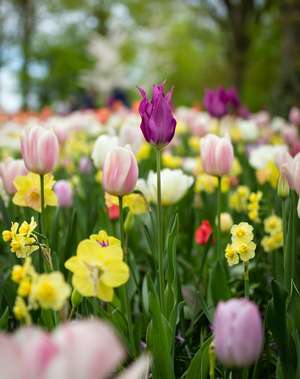

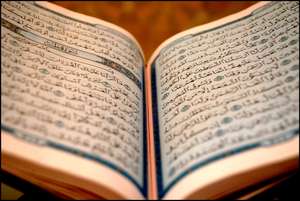
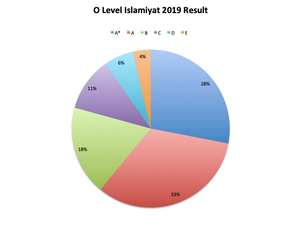
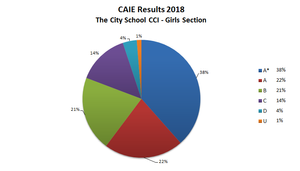
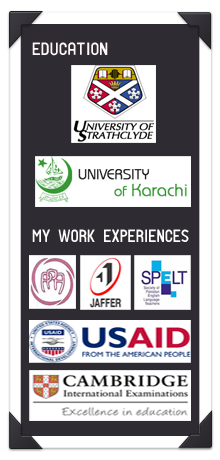
Comments